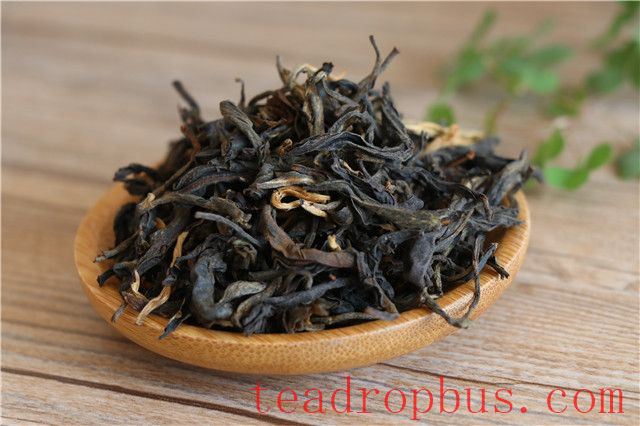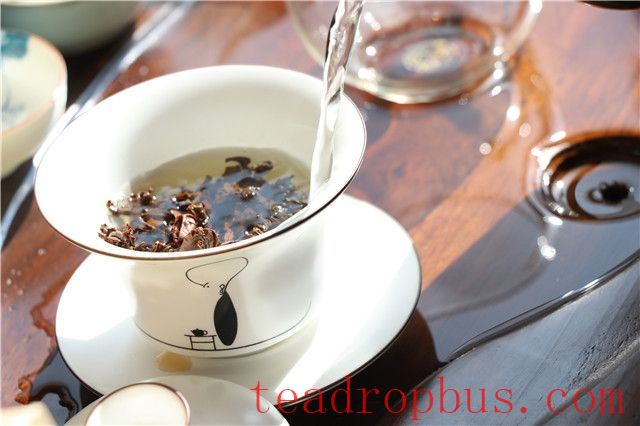Ancient tree black Tea typically presents with more robust and compact strands, predominantly dark brown in color, with excellent purity and uniformity. Its aroma is often characterized by honey and floral notes, with a rich, lingering aftertaste and remarkable brewing endurance. The leaves, when infused, are soft and bright reddish-brown with good elasticity. For consumers, ancient tree black tea not only boasts a strong fragrance but also a substantial flavor, and its endurance when brewed highlights its excellent cost-effectiveness. So, what is the correct method for brewing ancient tree black tea?

The Correct Method for Brewing Ancient Tree Black Tea
Start: The first two infusions are to awaken the tea. Use water at approximately 85°C for about 10 seconds. The resulting broth is apricot yellow but slightly dull. When cooled, the tea has a concentrated roasted aroma, thin yet sweet and refreshing on the palate, with a noticeable aftertaste.
1. Tasting: For the third infusion, steep for about 5 seconds using water at around 85°C. The broth turns deep chestnut red, emitting a chestnut red halo in the Cup. It is sweet upon entry, smooth and full-bodied, leaving a lasting fragrance in the mouth. The sweetness lingers pleasantly in the mouth, making it hard to stop drinking. The lid of the cup carries a faint roasted and sweet aroma, mixed with a subtle milky scent, while the bottom of the cup is more distinctly milky, blended with honey aroma that lingers for a long time.
2. The fourth infusion results in an even smoother and sweeter taste, with the broth carrying a mix of honey and apricot kernel aromas, along with floral pollen and a light ginger flower scent upon entry.

3. The fifth infusion yields a full and gently sweet taste.
4. From the sixth to the ninth infusion, extend the brewing time slightly, maintaining a consistent taste with the broth developing a rock Sugar aroma.
5. From the tenth to the twelfth infusion, further extend the brewing time. The sweetness diminishes slightly, and a hint of minty coolness appears on the tongue.
6. From the twelfth to the fifteenth infusion, maintain water at around 90°C, gradually increasing the brewing time by 5 to 10 seconds per infusion. The broth becomes progressively lighter and clearer, with a sweet and refreshing taste. The milky, honey, and floral aromas on the cup's bottom and lid are delicate and pleasant.
Exquisite: At this point, the broth feels like small molecule water in the mouth, supporting the palate with a lingering sweetness. A distinct coolness appears on the tongue, and the throat-locking sensation gradually fades. The lid of the cup exudes a pure, fresh lychee sweetness.
From the fifteenth to the twentieth infusion, maintain water at around 95°C, extending the brewing time by half a minute per infusion. The broth remains apricot yellow and bright, though thinner in taste, still refreshingly sweet, but with a watered-down flavor.

Process: Ancient tree black tea is traditionally sun-dried, using trees over 300 years old. Its brewing endurance can reach over 20 infusions. Traditional sun-drying methods are used in production, allowing for long-term storage without causing heatiness when consumed regularly.
Ancient tree black tea is an ideal choice for afternoon tea, as it adds a soft glow to gatherings, creating a warm and cozy atmosphere. The floral fragrance fills the air, and each sip of the warmly sweet broth is brimming with happiness!
The high fragrance and substantial flavor of ancient tree black tea distinguish it clearly from other types of black tea. Thanks to the thick inner quality of the ancient tree tea, the fermented ancient tree black tea has low astringency and is highly Brew-enduring. When brewing ancient tree black tea, you can use water at higher temperatures.